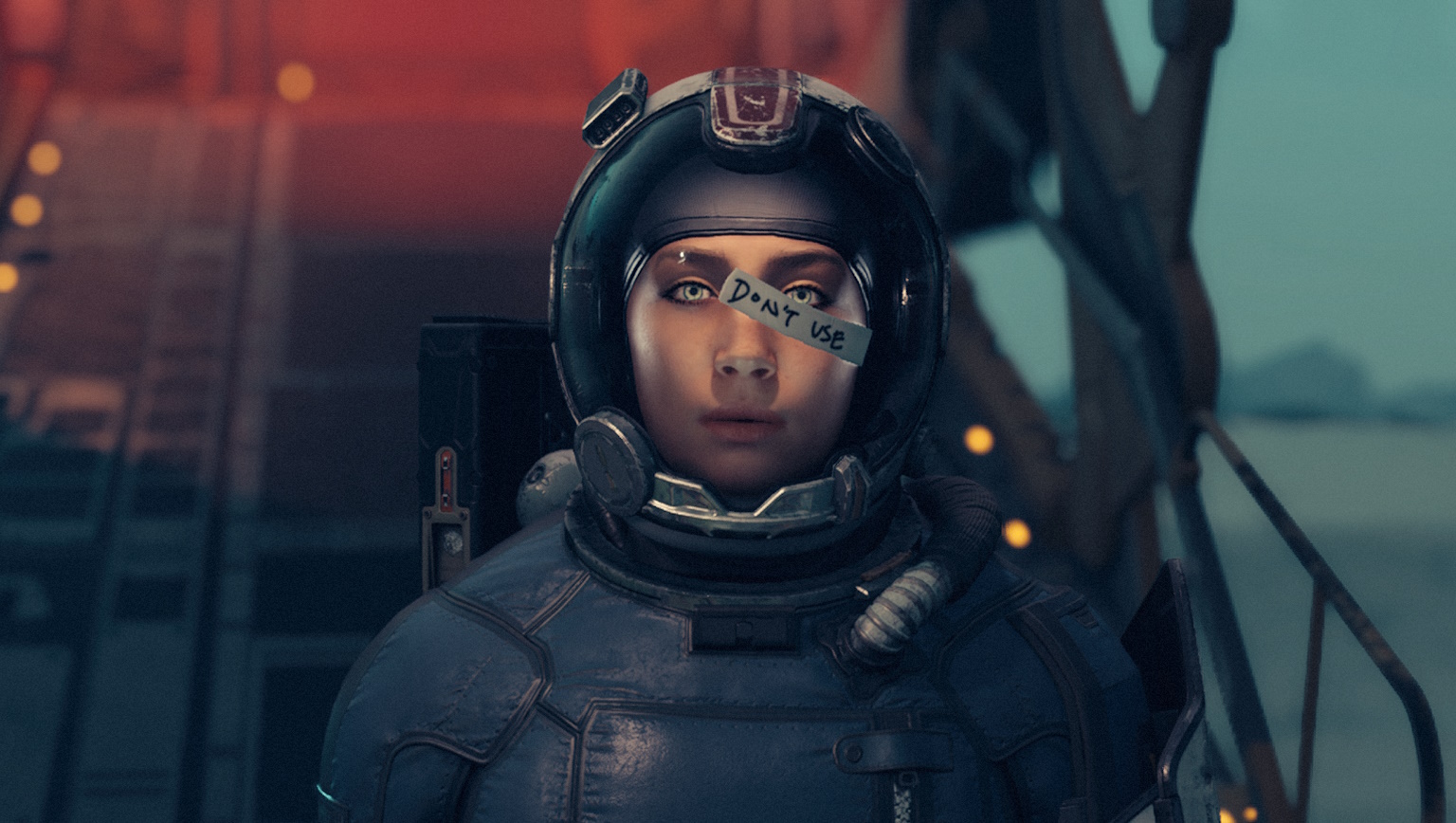You probably don’t need another Starfield review. But the myriad things that drag the game down still need discussing. I need to vent all that frustration, mostly with all the game design choices that make the game frictionless. And what do I mean by that? For the purpose of this post, friction is “obstacles that require skill and adaptation from the player.” As Starfield stands right now, the only player trait you need is tolerance of checklists.
There’s no exploration
IGN left an early impression on me, with the summary of their 7/10 review stating, among other things, that Starfield represents an absolutely boring vision of the future of human space exploration. Truer words have hardly ever been put into a bullet point, because there’s zero sense of wonder in Starfield.
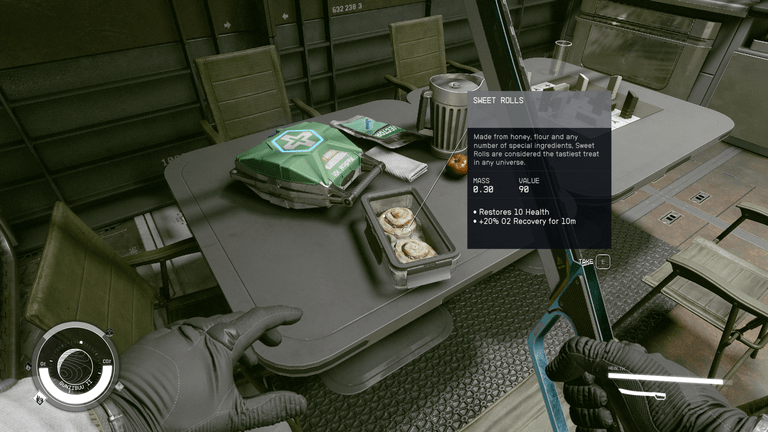
From the start of it all, the map is already fully revealed – no systems or planets are there to discover. However, you can’t just go where you want as systems have their own difficulty ratings. So you know early on that you shouldn’t go somewhere that’s level 55.
Systems are not rated by the dangers posed to you by alien beasts, strange climates, weird stellar winds, tectonic upheavals or azidoazide azide rains. It’s obvious that the level represents naught but enemy power levels. In a fantasy game, it would be like a map having “here there be bandits in ebony armor.”
So the dangers are pre-explored and we even know some details of the planets’ atmospheric conditions. There’s no blind-jumping to a system, no shooting probes down into the atmosphere and seeing them melt on the way down – something that would suggest you should return after investing in some structural reinforcements. No, you have to come back with bigger guns because Hubble Space Mission III has detected atmospheric emissions associated with signs of Ecliptic Warmonger – a notable species of Space Mercenary.
Yeah, by the way, people have already been to these planets. While surveying Gunniibu II for a mission, I couldn’t build outposts there. The environment was just too harsh! So harsh that I indeed discovered a few structures and campsites that the procedurally generated map spawned there. I’m not the first human here, just the first one to be stupid enough to have come here without the ability to build outposts and with the goal to do any cataloging of this planet.
Speaking of galactic “first!”s – why do I have to survey planets civilization has already settled for hundreds of years? I could just look that up on Encyclopedia Brittainisnolongerathingica. There’s no reason why the capitals of superpowers wouldn’t be explored by that point, especially considering that our planetary surveys are just about scanning trees and animals.
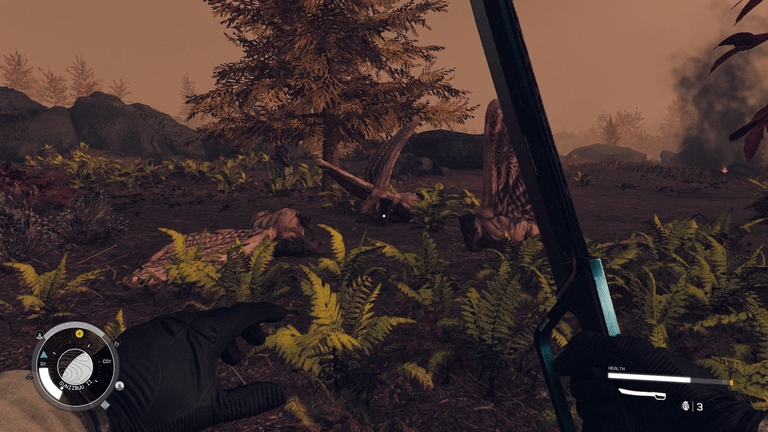
There’s… very little else to do on any given planet. When you land, you start looking for map markers on the horizon and then foot it there, scanning everything you can on the way. You dutifully run down your checklist by pointing-and-clicking your scanner at new stuff. You will not run into quests or actual hidden secrets of the super powers. Unless it was hand-placed there and visible from the lackluster orbital scan, you won’t find anything important.
Research is dead
To overlap with exploration just not being a thing, there are two ways in which research is the least wonderous thing in Starfield.
Like I mentioned in the exploration section, it’s an entirely friction-less, skill-less system. When you jump into a solar system, a lot of details are already known about every planet. Then you do a single scan and it reveals all the resources and which regions of the globe are richest in what. You will also get a precisely accurate assessment of what weird traits the planet has.
There’s no sending probes, no comparing sensor results – nothing that would require skill or resource management from the player. Starfield, a game about the wonder of space exploration, is somehow less in depth than Mass Effect 2.
Once you’re down on the planet, all the research is carried out via an instantaneous smartwatch scan. You got the watch from the guy that Starfield wishes to present as a lovable rogue and old mentor. Trouble is, you had not even known him for five minutes during the tutorial before you were kicked off the planet to do plot.
Anyway, the smartwatch. As you go about shooting and looting, you’ll see all sorts of beakers, genetic sample bottles and vials in the numerous abandoned research stations. You know, tools for scientists doing a science. Which is obviously the baby’s way of doing things. Constellation, our main space exploration faction, has reduced the act of analyzing the flora and fauna and natural phenomenon to a point and click of your scanner watch. The rest of the scientific equipment you can find is only there because random clutter and physics interactions are a Bethesda game meme.
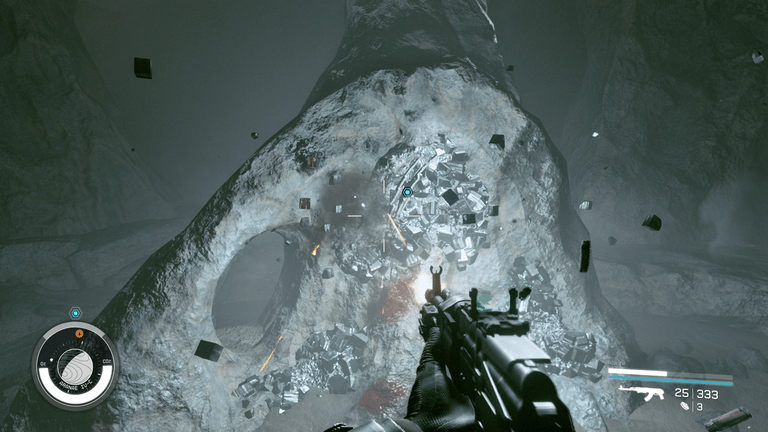
The Elder Scrolls series has a more scientific-feeling approach to research – and that just means eating potential alchemy components to find out what potions they could make.
In Starfield, you don’t sedate some spider grazers to take tissue samples. You don’t construct a turret-ringed outpost for a bunch of eggheads to complete a planetary survey with the best bleep-bloop machines your money could buy. You don’t even place a single sensor pod next to a gravity anomaly – everything is done by the watch.
No planning, no mini-games, no demand for any skill other than sheer endurance needed to run around and press E to instantly scan a tree. It’s boring, it’s frictionless, it goes against any sort of fantasy of research and exploration, it reduces the act of investigating the creation to ticking off a checklist.
Fascinating new discoveries in awful crafting systems
But what Starfield actually calls research is even worse. Now, assuming you haven’t played the game, imagine a research system in a sci-fi space exploration game. I can wait.
Done yet?
Doesn’t matter, you’re wrong.
Research in Starfield is about inputting a certain amount of materials into a crafting table to unlock the ability to put reflex sights on a gun in TYOOL 2300. You can also research the ability to toast sandwiches or put chairs in your space outpost. Oh, but don’t get too excited – the higher levels of research are limited by your skill level.
This is not research. This is purchasing with extra steps. This is not research. I’m not risking anything, I’m not waiting for any tests to complete. I’m not doing any minigames. I’m not seeking the new and unseen. Heck, I’m not wondering what the results of the “research” will reveal: I already saw at the crafting table what mods are blocked by what research. There’s nothing to wonder about, to be surprised by.
To switch genres a little, let’s talk about 4X games, a genre legally obligated to include research. Sword of the Stars, featured research trees that may not always offer you the same tech. Thus, you are provided with a crucial bit of replayability, requiring you to switch up your tech strategies just that little bit from playthrough to playthrough. Moreover, research projects that could run over time and over budget – hey, realism!
The Civilization series eventually managed to add bonuses from doing certain mini achievements to make your research shorter. Stellaris is full of weird stuff that your explorers can stumble into and put unto your research que.
Or, to put it shortly, a first-person role-playing game, a genre that’s from the ground up is best suited for intimate stories about being at the spear tip of research and exploration, provides a less immersive experience of uncovering new horizons than the genre of being the disembodied spirit running a nation state.
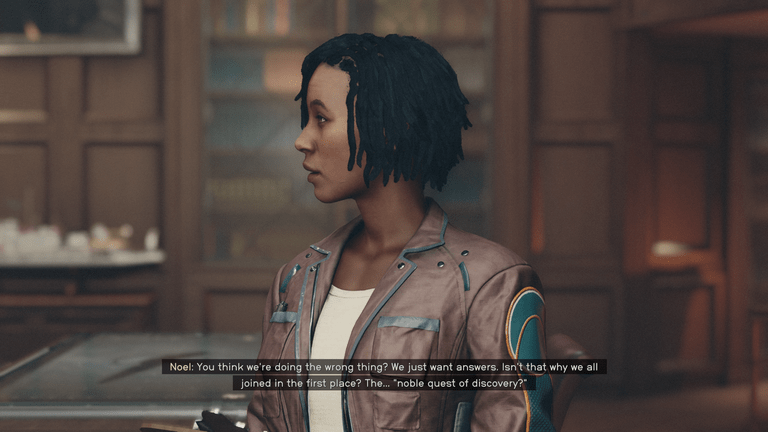
By the way, you can find guns with reflex sights and other modifications in nature. You’re not inventing tech unseen by locals. But you can’t take the mods out of the weapons – or buy mods at a store. You need to craft the modifications for individual weapons by paying some resources at the weapon modification table.
Things you can’t do at the weapon modification table: make the gun refined or calibrated to, which would increase their rarity level and stats.
Like I mentioned, there’s no suspense in Starfield’s cutting edge of scientific effort. There are no surprises. XCOM games aren’t about exploring space, and research in that series is both hard (aliens don’t die by themselves) and can deliver surprising results.
Well, OK, the Starfield fails at wonder and discovery. But maybe what universe is already there is enough.
The most boring vision of humanity’s future
The two powers in the Starfield setting are United Colonies, which is the Bureaucratic United States. Their opposite state is Freestar Collective, which is 19th century Texas.
Usually, when I describe the appeal of Imperium of Man (and 40K setting in general), it’s because it’s violently different from most sci-fi settings, where I say, derisively, space humanity is just Blue United States in Space. This description was meant to be a joke, but Todd Howard seemingly took it as a challenge . He made two competing visions of space America: the squeaky-clean and polished superpower whose main drawback is bureaucracy and the rough-and-tumble frontier nation where the highest law enforcement organ is literally a dozen guys in dusters.
Crucially, both of their capitals have a dedicated poverty district to ensure that a perfectly-balanced state of Makes You Think exists.
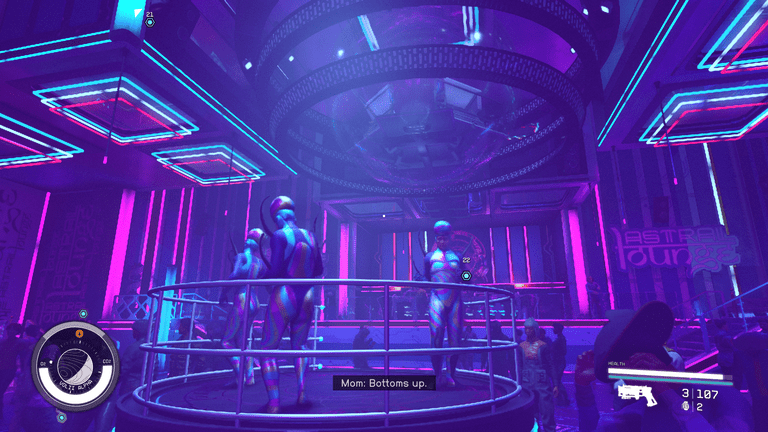
Well, the two factions at least share the two mainstream religions: Store Brand Monotheism and House of GoodWithoutGod.Com. The third religion, the Wacky Snake Cult Guys, are the exotic, militant Other. They get the funny jump pack trait in chargen!
Outside of the simmering tensions from past wars, the locals are threatened The Eclipse (formerly kmon as Eclipse: A Ruthless Mercenary Company Not Associated With The Ruthless Mercenary Company Of The Same Name From Mass Effect), the Crimson Fleet pirates, Wacky Snake Cult Zealots, and Nameless Mooks Dedicated To Being Described As Worse Than Crimson Fleet – or Spacers, for short. These are all acceptable to shoot on sight.
The only interesting part in this by-the-number spacechart is that Earth is abandoned. You might even think there’s a mystery to that, what with one character offhandedly mentioning that some guys don’t even believe Earth exists, but no, it’s there. You even jump to Sol on your first plot mission outside the tutorial. Mars is simultaneously both the backwater of UC space and also their most important space yard.
This whole setting building felt more of an exercise in check-box filling than any planetary survey. I flail uselessly at the keyboard, language seemingly not enough to express the deep frustration with the lack of creativity expressed in faction designs. There’s no hint that other space programs outside of NASA existed, and the only nod to other nations that you’d logically put as contenders for space colonization is that Freestar has a single Chinese corporation.
But if the future of humanity is boring, then the future of battles is… actually boring as well.
Picatinny rail, the archeotek relic
Let’s get this out of the way: the very basic combat in Starfield is fine. The enemies may be bullet spongy (and special enemies have several health bars which regenerate), but whatever, maybe it’s the space suits. Sometimes, sufficiently injured enemies go down and start crawling around. Which is nice! It’s nice when enemies have states other than 100% healthy and super dead.
Shame you can’t take them prisoner or force the enemy to surrender when they take enough casualties. However, even strategy game creators often find it hard to care about morale, so it wouldn’t be nice to ask that of Starfield either.
And so, having established that Starfield combat is, broadly speaking, OK, let’s talk about the design decisions that work to make it worse.
Consider the frag grenade:
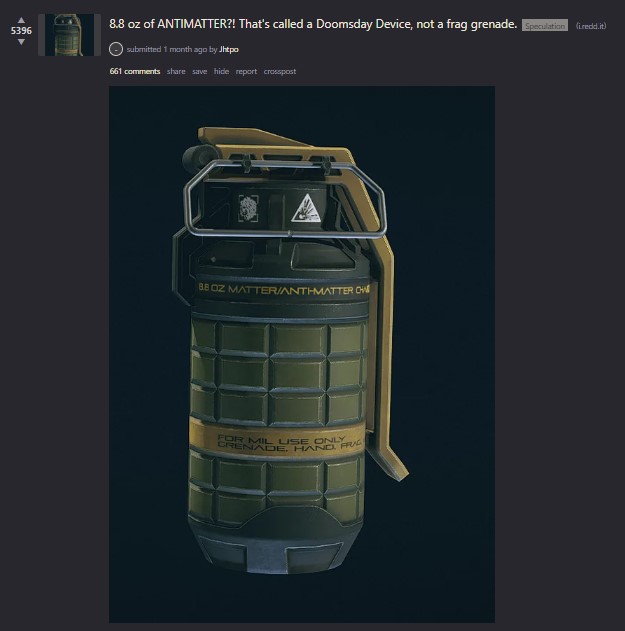
It’s a grenade, an angry tube that pops off once you take its ring, not much different from what you’d see in any other game. Except for three things:
- Its case proclaims that it has a matter/antimatter charge, which is a tremendously stupid idea, especially for a NASA-core, IFLS-targetted game. Any science nerd will tell you that yes, matter/antimatter reactions are very potent, but that you also need a field to keep them separate. Congrats, you made a grenade that is not very shelf-stable, requires a power component, and if damaged (in, say, combat), should start a chain reaction that puts Halo 1 grenades to shame.
- Despite being called a frag (‘fragmentation’) grenade, it explodes like you would expect any game grenade to blow up – a circular blast. If you want fragmentation, you need to look to the shrapnel grenade, which makes the enemies take damage over time. There was nothing preventing the devs from being accurate in naming – except for lack of interest, maybe.
- At 0.5 kilos, it weighs more than the 40-year-old M67 currently in the US service.
So even without addressing gameplay issues, the design aesthetics of the grenade already go against the whole “wow, they put so much realistic detail into this game” praise Starfield is getting.
What’s more, they put very little thought in anything that would make the combat be space-futuristic.
A bajillion years ago, Deus Ex featured grenades that could pull double-duty as mines. In Starfield, mines are a separate category. The only thing “futuristic” about those is that neither you nor companions can trigger them, but that’s just a quality of life feature it probably inherited from Fallout 4.
So your grenades can’t be mines, can’t be stacked together to increase yield, aren’t miniaturized like some people fantasized in ‘80s and ‘90s, can’t switch between fragmentation and blast, don’t aim themselves, don’t have have tiny rocket-boosters to increase range and accuracy… it’s just a grenade, one unit of. The only “future” thing about it is the matter/antimatter charge, which creates more troubles than it solves.
Destiny, which is about as creatively barren when it comes to magic as Starfield is to exploration, at least has your “grenade” power go with a lot of potential modifiers. Borderlands gave us grenades that teleported to the target. I don’t think it’s a bridge too far to ask for grenades that explode into bomblets, activate by proximity, encase the enemy in goop, scramble their sensors or just produce smoke.
And I don’t even want to get started about what I think about elemental damage effect mines or ammo. I already got mad about that while playing Cyberpunk 2077.
Let’s talk about guns, shall we? Because no thought was spared to make the guns act futuristic. Sure, the magazines are placed in unusual spots and there are a lot of weird structural components. But guns just accrue greebles for greebles’ sake.
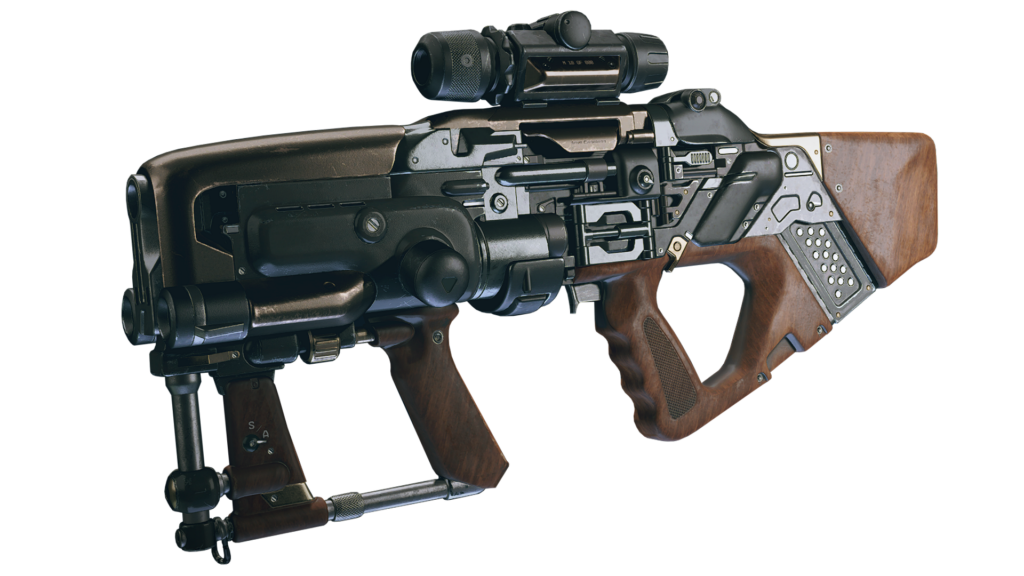
You can’t even claim that the added metal gives them “hidden bonuses” like combi-rifles having increased close-range accuracy over rifles in Infinity. While you have modern space guns like the damned Grendel in 7.7mm and Maelstorm in 6.5mm, you can also find literal AK-47s in the game. As you can buy plenty of 7.62x39mm ammo anywhere, the AKs perform as well if not better than guns made 300 years in the future.
Meanwhile, here are some things that guns made 300 years in the future don’t have/can’t do that modern guns can:
- Mount under-barrel grenade launchers (or shotguns, etc.)
- Switch between ammo types (within the same caliber).
- Have Picatinny rail mounts to add off-the-shelf accessories.
- Have thermal scopes.
- Mount bayonets.
No, to access some of these functionalities that we can take for granted with guns today, we have to engage with three cursed systems: research, skills, and crafting.
I already talked about how dead research is in Starfield and how it’s even worse with guns. But neither skills nor crafting are any better.
You can’t teach an old knife new tricks
If you want to put a mod on a gun – for example, a laser sight on the pistol – you can’t just waltz into a store and buy one. No, you need to “research” gun mods (pay resources) in the research station and then “craft” (pay resources) at the weapon station. If you find yourself lacking in necessary components, you can run down to the local UC Surplus store to buy them (pay money for resources).
But if you want a recon laser sight (which marks targeted enemies with a thermal smear), you additionally need to unlock higher tiers of the weapon mod skill. This requires not only skill points, but to also complete a skill achievement to unlock that higher tier of skill for leveling up .
With Starfield locking skill levels behind related achievements (which is, by itself, actually good), this means that you need tens of mods to eventually reach the level where the recon laser sight is unlocked.
It’s all about running down to the store to buy resources to buy mods you don’t need for weapons you won’t use to grind those skill-prerequisite achievements.
The whole weapon modification chain in Starfield is nothing but multiple levels of purchases to purchase more to purchase more. Sure, an absolute majority of games with crafting mechanics actually make it “purchasing with extra steps,” but Starfield’s pay-to-pay chain takes the cake.
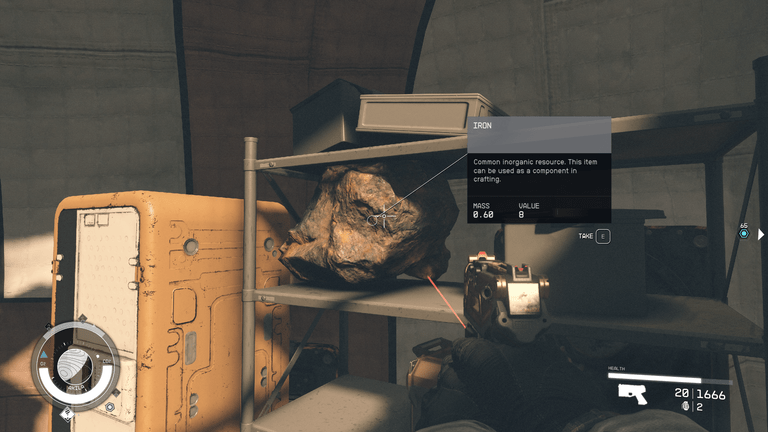
And while we’re on the subject the mods also brush against the both verisimilitude and future sci-fi feel! For example, changing ammo type – like buckshot to solid shot – is a weapon magazine mod. Suddenly, my AK can fire armor piercing rounds. But the magics that transform 7.62×39 into the 7N23 version don’t work with drum or tactical magazines, which are also mods from the same category, sorry.
Mass Effect 1 could sort of get away with this shit, as your weapon was already kind of manufacturing its own ammunition, so a mod making it explosive wasn’t too far-fetched. This doesn’t really work with regular bullet-eater guns!
And setting aside that knowing what mods you’ll get three research levels later saps any sense of surprise or wonder, neither the mods nor the guns do anything special by themselves. Certainly Starfield likes to future it up with caseless ammunition (currently infeasible for various reasons) everywhere, but that’s it. That’s all the future tech you’re getting
You don’t have strange, even programmable secondary fire modes a la Gunman Chronicles, a game made before 9/11. You can’t make the guns reconfigure themselves to use ammo of a different caliber. You can’t even switch ammo types (STALKER and Fallout 2 let me do that)… you can’t even switch fire modes outside of a weapon bench!
Also, modding a gun to be fully automatic has the weird effect of suddenly tanking damage per shot, turning any fully-auto Equinoxes into vendor trash.
Oh, and you can’t modify melee weapons at all. I don’t want to see any more electrified or fiery axes ever again, but you’d think a game as creatively bankrupt as Starfield would at least give you that. Nope! What you can get are knives that make enemies drop more med packs or guns that do more damage the less health you have. These are very standard video game traits to give a weapon and they go against any sort of similitude.
So some magic is possible, but not for the player who wants to specialize in melee. If you find a rescue axe, you will not get a better axe until the level-gating loot system lets you stumble upon a calibrated or refined version.
Calibrating and refining, incidentally, sounds like something you should be able to do at the weapons bench. In a game that was designed better, you would be able to calibrate and refine weapons. This better system could employ design features already present in Starfield, like achievements for using a specific type of gun. This would show that you’re learning the quirks of the platform in question and gaining insight into how it could be improved.
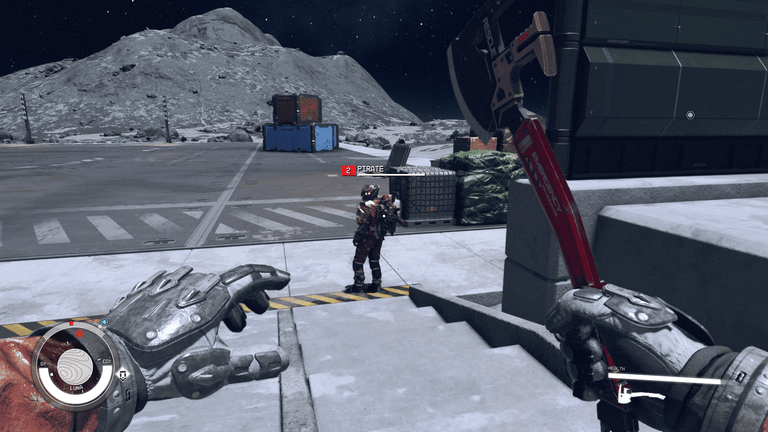
“But why would the devs care about melee in a space game with guns?”
Because Starfield cares. It cares enough to include enemies – including professional space mercs – who immediately launch into a berserker charge. No suppressive fire, no grenades to stop you from shooting them on the way – just rushing the protag.
You also have skills for both melee and unarmed brawling on them there skill tree. But Starfield just doesn’t care about melee weapons.
But that’s OK, Starfield doesn’t care about laser weapons, either. Despite Lasers being one of the five early tier 1 combat skills, you’ll find a single pistol and two rifles in total. Meanwhile, there are at least 8 types of ballistic pistol. Gah.
By the way, did I mention that Skyrim’s dual-wielding is also absent?
At this point, I won’t even get into other future (or present day) warfare stuff that the game is missing: night vision or thermal goggles, bionic implants, flash bangs, smoke grenades, small drones for spotting or ramming fools, disposable anti-tank weapons, space-suit mounted ECM and targeting pods, hunter-seeker missiles mounted on your backpack, lasers for blinding enemies, support weapons mounted on ground-based drones (the enemy does have robot buddies like that, though), artillery pieces mounted on your landed spaceship…
Oh, right, spaceships!
Don’t put space combat in games not about space combat
In Starfield, you get your first spaceship immediately out of your first tutorial combat. You can’t fly it in the atmosphere, and takeoffs/landings/dockings are handled via cutscenes.
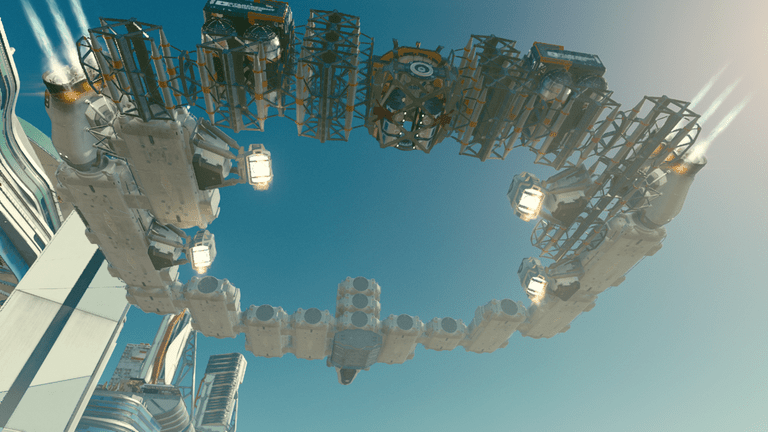
Once I got to my first space combat, I immediately felt hate.
Your ship has three weapons: ballistic, laser, and missiles.
Laser is for taking down shields. Ballistic is for destroying the hull. Missiles are for range. Later on, a couple more minor groups are introduced.
By Endless Space 2, even the developers of a 4X franchise understood that rock-paper-scissors weaponry balance feels bad. Yet aspiring space game designers still trip over this, time and time again.
There is nothing tactical or pleasing about switching from lasers to ballistic once you pop shields. It’s just busy work, compounded with the least-immersive power-routing system ever put in a space-ship game. In the midst of the battle, you need to switch to controlling this tiny set of power bars, banished to the corner of the screen. You need to switch between systems to boost/denergize them. Presumably, you’d do that multiple times per battle to optimize weapon utilization.
By the time I deleted Starfield in disgust after learning the “twist” of the main plotline, my approach to laser/ballistic conundrum had been optimized into “equal power, fire both at the same time.”
Incidentally, you can’t have different weapon models in a single weapon group, let alone weapon types. No combining lasers and ballistics in Group 1, no slaving four wildly different lasers to Group 2 and so on…
It’s a wonder MechWarrior functions at all.
“Hey, didn’t you forget the missiles?” you ask.
Well, the missiles in Starfield are the least pleasing missiles in any space game I’ve ever played, which includes absolute turds like CHORUS.
I took a glance at my review of CHORUS, by the way. It somehow managed to pull off the laser-shields/gun-hull combo better by making lasers slow-firing, which necessitates precise targeting. That CHORUS did something better than any other game is unconscionable.
Now, CHORUS, a middling AA game, can’t be faulted too hard for not following the best weapon design practices of all space games. Usually – in games of yore of Freelancer to Everspace 1 – a missile is a strong weapon balanced out by limited ammo. Thus, in exchange for getting a target lock and carefully shepherding your limited resources, a missile can either one-shot an enemy or just royally mess it up.
In Starfield, missiles outrange all other weapons while doing somewhere around three times more damage per shot than a ballistic weapon.
A ballistic weapon that I’m firing without ever taking the finger off the trigger. Why would I care to play power routing games to fart out ineffectual missiles when I can already out DPS it without the hassle?
Missile weapons are so pathetic that I threw them out as soon as I could and never repurchased.
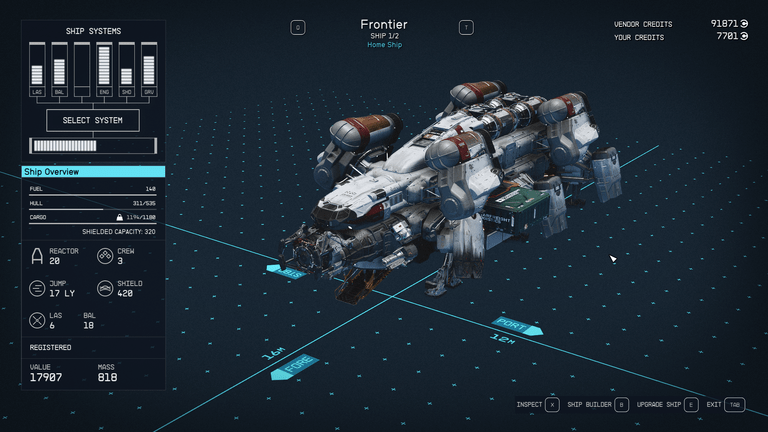
Now, what do you expect the big shortcoming of ballistic and missile weapons to be when compared to lasers? That’s right, ammo. Unless you broke your brain over chemical lasers (thanks, Space Colony), a laser has ammo as long as you have power. Ballistic weapons and missiles, less so.
Unless you’re playing Starfield, in which case all the weapon types have endless ammo.
And since missiles have infinite ammo, they had to come up with a different limitation to them. Since the design ethos of this game is to make it as frictionless as possible, they made missiles very weak.
Sure, this made the missiles feel awful to use, but hey, the imaginary player with crippling friction allergies doesn’t have to worry about ammo stocks – or replenishing them at port.
I wonder if it was this fear of friction that made them sacrifice Newtonian physics. No, not every space game needs to have them: Freelancer didn’t – and it’s one of the best games in the genre. Darkstar One had them and nobody remembers it.
But considering how NASA SPACE EXPLORATION Starfield goes all over us, it feels like a misstep to not include a more realistic space flight model. Plus, maybe it would make the absolutely boring, cookie-cutter space battles less bland than they are now.
The ship damage model is another such design mistake. You have a shield bar (unless you built a ship without it) and the ship health bar. The former regenerates as long as you have power; the latter starts healing as soon as you apply a box of ship parts as if consuming a health pack.
And sure, individual ship systems can get damaged, but…
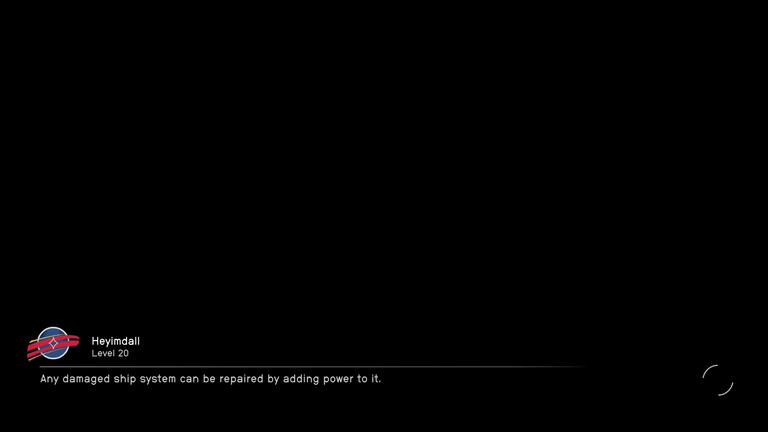
Frictionless. To repair a damaged system, you need to route power to it… but the only system that you wouldn’t route power to during the battle is the grav drive, so it’s not really an issue. Not even the person putting turn signals on a BMW has a job as useless as whoever had to code the dialogue option to have the shipyard technician repair your boat.
Naturally, things like a damaged ship starting to vent atmosphere or having fires break out in crew compartments aren’t a thing at all.
But wait, there’s even less! About the first time I boarded a ship in Starfield to fight the crew, I thought about how the game definitely won’t do anything to make it different from fighting on the ground. Cos it would sure be nice if the NASA-punk, low-tech aesthetic would have been accompanied with boarding combat where the fighters have to avoid damaging the ship from the inside.
I chuck a grenade into the cockpit. I know that nothing important would be hurt by this.
A shame. Having fighting inside the ship force you to be careful – using different weapons and/or ammunition, maybe putting more emphasis on getting into melee – would have been baller. It also would have been great if this had been the space to naturally insert zero-G gunfights fights.
I guess I missed some lore snippet that explains how the grav drive creates a uniform plane of gravity on the ship. So my boat can dock to an enemy boat at a right angle and once I cross the hatch, I spawn oriented for the new ship.
Nice. Frictionless.
Same goes for the fuel mechanic. It’s just a limit to how far you can jump in one go. Which is by itself pointless, since fast travel makes a single jump from system to system feel the same as doing five jumps in a chain.
But you know what’s less than meaningless in Starfield? Breaking thrusters. Radiators. Other parts that you would think be important in a NASA-core aesthetics game, but are banished into the Structural category of ship parts.
(By the way, some online guides still refer to this category as “Cowlings”. That’s because they’re going off some early PR art as the game guide industry is only less of a horrid mutant than SEO.)
Structural parts are there only for cosmetics (Galactic Civilizations send their regards), but they cost money and increase ship mass. So making your ship look “realistic” is making it worse for no gain.
By the way, there’s no realism enforcement in the builder. As long as you fit within the build volume and can walk a path between the cockpit, docker and lander, you can make the most lopsided nonsense in existence fly and land perfectly.
Supposedly enemy ships aim at your center of mass. To experiment with it, I made a maximally wide horseshoe ship. Don’t know if it helped me in combat, but it did make the ship glitch into terrain.
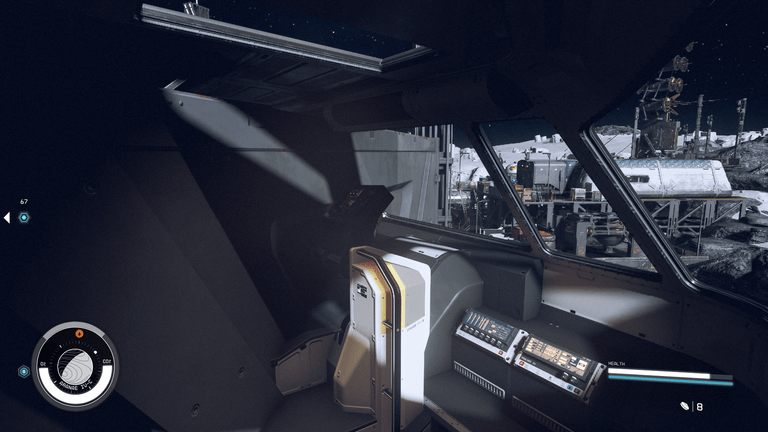
Even more than combat, anything to do with ships as made without love or skill. Wait a minute, skill…
Worst skill system since ADnD
I wonder how much I am out-earned by the guy who decided that stuff like pickpocketing, run-slide, stealth-bar and boost-pack use have to be locked behind skill unlocks in Starfield. It’s not that you’ll have measly chances to use those skills, it’s that you won’t even have access to them at all.
At the same time, in contrast to locking basic game mechanics (I’d like to see the person who finished the game sans boost packs), a lot of the skills and their ranks are garbage.
For example, let’s talk about ballistic weapons, laser weapons, EM weapons, particle weapons, pistols, rifles, and shotguns being separate skills.
What do you get for your skill investment? 10% increase in damage per step. But hey, at least it’s not a single percent increase, right?
This also leads to enemy levels translating to inflated health pools, because making the enemies smarter or more skilled is hard.
And it’s not like Bethesda doesn’t have any levers to pull when it comes to skills. Increasing accuracy, draw speed, aim speed, reload speed, etc. are all there – you can increase them via weapon mods (they can also increase damage). Those are all things a player character can feasibly be terrible at when untrained – and where experience could lead to logical improvements.
You could even, God forbid, animate the faster reloads and better pistol grips.
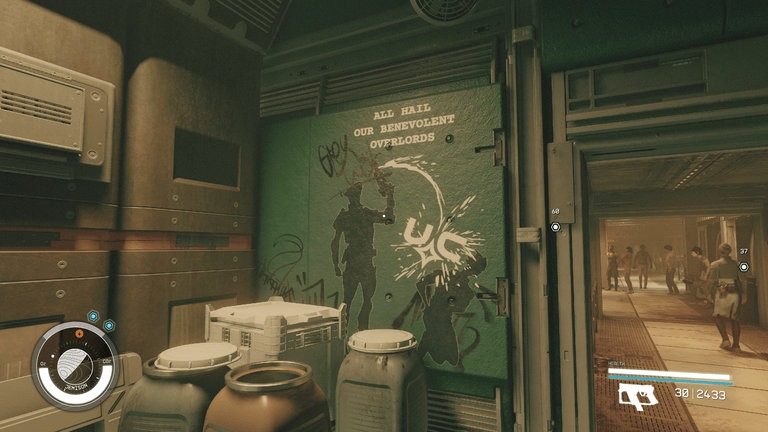
It may also make some players sad that the cool weapon they just picked up acts clumsy in their hands. Better let them use anything they want and if that gun is pitiful because it’s a laser pistol and all of the skill boosts went into ballistic rifles, welp.
One could even imagine an alternate Starfield where, with enough skill in pistol and melee, you could Solid Snake a knife and a gun at the same time. Or maybe even 40K it up with some dual-wielding!
Of course, Combat isn’t the only skill there to disappoint us. The Science tree is full of skills to make planetary exploration help you run the checklist faster as well as the dreaded crafting upgrades. It’s also where you turn to if you’re interested in building outposts – a part of the game that even folks who spend 500 hours in a base building frenzy throughout Fallout 4 call “pointless.”
Tech skill list is like a mash of the worst parts of Science and Combat, but for spaceships and boost packs. This is where you unlock the ability to fly better boats (distinguished by using more powerful reactors) and use boost packs at all, use ship thrusters, improve the damage (and regen rate of ship weapons)… You know the drill. Also, this is the place where you learn to pick locks. Sure, why not.
No hacking, though, as hacking as a mechanic didn’t exist in Skyrim. But ONLINE GUIDES tell me that it’s a thing in Fallout 4, so it not appearing in Starfield is a damn mystery.
Physical is the other skill tree you may want to invest in if you want to go the melee route – being better at beating up people isn’t a Combat skill (unless it’s literally about using Melee weapons). Outside of unlocking the Stealth bar and sliding, it’s full of stuff like damage mitigation and making the Bethesda-brand slavish adherence to awful stamina systems less painful.
But some real game design perversions are hidden in the Social tree. It unlocks Persuasion (extremely situationally available) and Bribery in dialogues. It’s where you learn how to steal and…magically scavenge more credits from boxes?
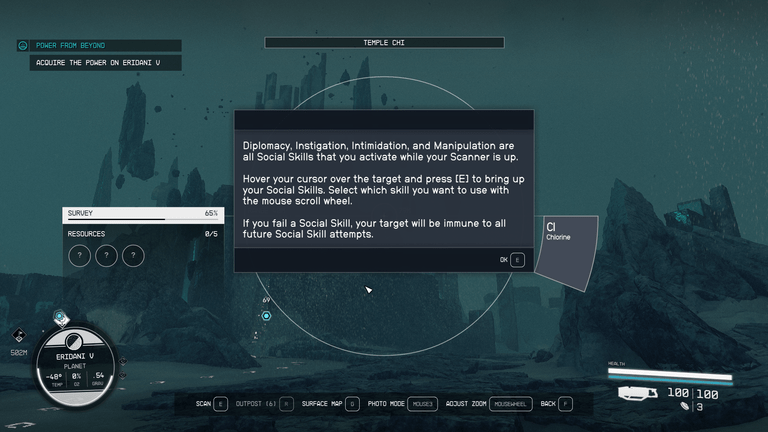
Worst of all, here are the skills like Diplomacy and Instigation that mess with enemy behavior in battle. They are inherently silly, like Diplomacy making an enemy not fight you for a spell while you’re slaughtering their friends. That’s dumb, yes, and closer to psyker powers that Eisenhorn would use than any real diplomacy. No, the real hell comes from having to access these skills by opening the scanner screen.
User interface not made for any child of Earth
Sure, I’m playing modded Morrowind and there were a few mods to make the interface better. Skyrim also had to be modded out of its console controller misery.
Meanwhile, Starfield manages to have at least three different button variations to navigate menus left and right. That’s direction keys, Q and Z, and Q and T. There is no rhyme or reason to these choices outside “E is the button for choosing stuff”. It gets annoying even outside of having to wrangle with the ALT key to set ship power levels mid-combat.
Switching between inventories is also fresh hell. You need to do it because you need to collect a lot of crafting materials in addition to all the usual loot. If you’re away from the ship, you want to offload that to the companion. But they also have a limit to how much they can carry – and the player character can’t fast travel overloaded.
What’s more, you can’t access additional companion inventory in stores or ancillary crafting tables, only yours and the ship’s. But the ship carrying capacity is also soon to run out because it also registers all the decorative clutter on the ship, from desk globes and microscopes, to five different menu entries for notepads that are individually visually indistinguishable. Maddeningly enough, there’s no “sell all” button for trash like there is with resources as this category also holds lockpicks and the rare quest-related item.
Starfield also has a propensity to give different values to holding and pressing the button. One of the most common annoyances like that comes with TAB, which normally opens a menu that leads to character options, inventory, etc. Holding TAB opens the planetary map (by the way, this game doesn’t have actual location maps). You can then incrementally tab out to view the galaxy or hold tab to exit the map entirely.
In space battles, you press E to hail a friendly ship or target-lock an enemy and hold E to get up from the pilot’s seat.
Probably even more frustrating is the fact that tapping F turns on the scanner and holding F toggles the flashlight. I’ve lost track on how many times I did one when intending to do the other.
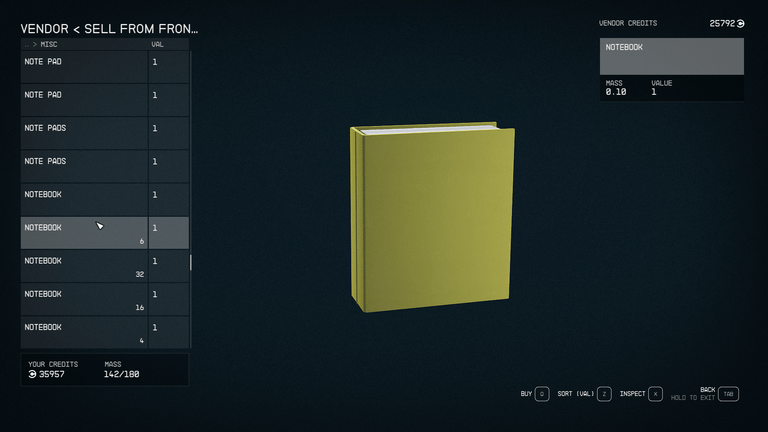
Oh, and the scanner menu is how you access fast travel as well as the battlefield diplomacy options! You also put your gun away, leaving only the mining cutter equipped. It’s sort of like Blacklight: Retribution’s HRV, but bad!
The indignities don’t end with bouncing between endless menus and buttons. Even the core first person interface has issues. Your status bar doesn’t show any positive effects you may have or their duration. You can see any illnesses you have (how am I getting frostbite in my space suit) and the extreme planetary conditions, but not their effects on you. To figure any of this out, you’ll have to access a few more menus.
Seriously, there’s more friction in switching inventory tabs than there is in exploring the galaxy.
And do you think they explained all those menus well?
We don’t need tutorials where we’re going
For those new to the blog; my main genre is grognardy military games. I’m no stranger to game developers who think that having a fully-functional in-game tutorial is the height of excess and iniquity. A faithful servant learns to love the PDF and a lucky servant may get an in-game tutorial scenario that makes you switch between the game and said PDF.
Starfield is somehow even worse at tutorialization despite the fact that it’s a cowardly AAA game that grafted on a bionic third hand to hand-hold the player better. You’ll have menus interrupting your gameplay all the time, telling you about this or that feature.
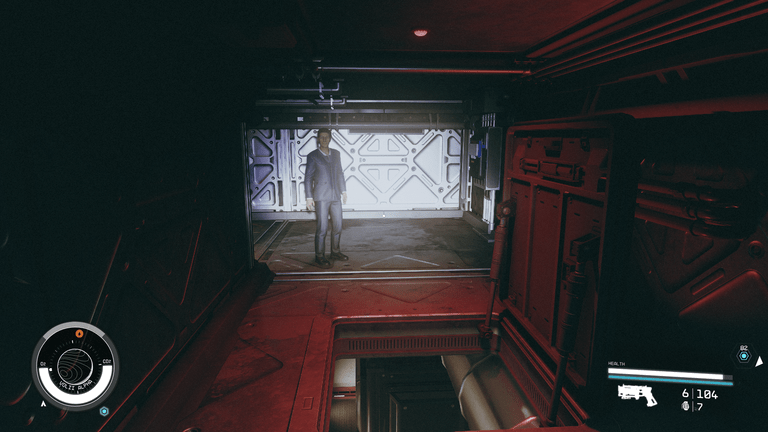
And then you have to have Discord people tell you, 20 hours into the game, that, actually, you can make your companions use the weapons and armor put in their inventory!
Starfield, more than any other game, justifies the awful video game site trend of dedicating swathes of their coverage to granular guides that answer the most inane of user questions.
What happens when you board and try to steal a ship? Well, PCGamesN is ready to give you more answers than Starfield itself.
It is truly a sign of the times – but there are more fell omens than that, omens that nobody will ever heed!
Bethesda RPG can’t survive the modern world
Much like how much thought wasn’t given to make exploration feel immersive, wondrous or tactile; so were the resources not wasted on revamping the Skyrim/Fallout world formula for a non-apocalyptic modern world.
That’s why your commerce skill still influences the prices at corporate gun merchants, stores at the most expensive districts of the capital and automated trade vending devices. Look, this worked in fantasy medieval ages and post-apocalyptic America, soooooo why wouldn’t haggling fly in the civilized far future?
Excuse me, I’m going to /ˈdʌbəl.juː/ /ˈdʌbəl.juː/ /ˈdʌbəl.juː/ dot games dash workshop dot com to rizz the website into giving me a discount on some Space Marines.
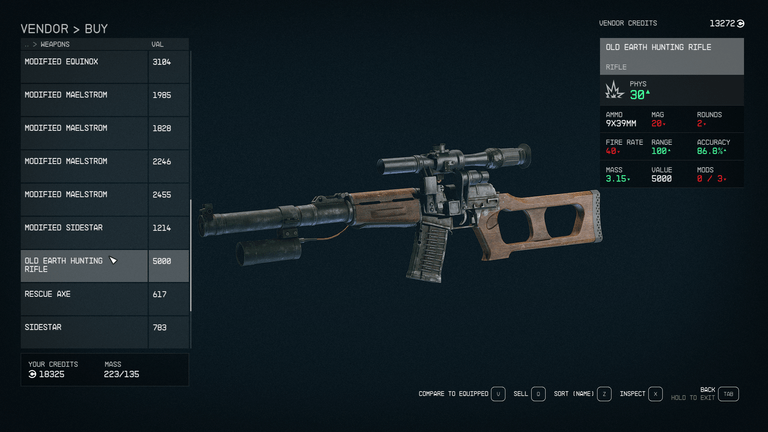
This is also the same world where a major gun corporation stores will accept any secondhand weapons you sell them. 20 Maestorms, rifles built by – and pried from the dead hands of – pirates? No problem, here’s your money.
Frictionless.
Speaking of money, having digital currency lay around in PDAs already felt a little silly in Deus Ex, a game that predates 9/11. In Starfield, the most booming sector of the industry is manufacturing USB storage devices that are used to hold up to 200 credits. You see, the player has to be constantly looting money, no matter how little sense it makes in the setting, so the galaxy in Starfield is the couch cushion of the future, holding untold riches.
Said riches come very useful when it comes to the laissez-faire attitude of any local law enforcement that all allow you to pay off murders, piracy bounties, any crimes before releasing you at the central cop station.
For added convenience, there are even self-service kiosks where you can clear the bounties! Starfield isn’t meant to portray a libertarian dystopia, yet there this slightly-less-morbid cousin of the suicide booth stands, uncommented and unremarked upon.
But it’s not just societies that Starfield implements badly. It’s also an issue when it comes to your body. You see, Bethesda implemented their favorite grossly misshapen and tumor-ridden sacred cow: the stamina bar.
Instead of stamina, you have oxygen. Once you run out of oxygen, you start building up CO2. You can still sprint, but once you fill up on CO2, you start taking health damage. This system would sort-of make sense if it only applied when wearing the space suit in unbreathable environments – maybe the onboard oxygen generator/scrubber just can’t handle your gains. But no, this is an issue everywhere, even in the most breathable worlds.
So that’s another wasted opportunity to create something that would bring verisimilitude to low-tech space exploration, but doesn’t. Worse, naming it the way they did – with allusions to something that could be an issue in a space suit – it brings to starker contrast the fact that Bethesda didn’t think about the small stuff.
But maybe the design time had a lot on their plate, especially where worlds and quests are concerned. All those procedurally generated planets actually get in the way of Bethesda’s usual quest delivery system. There’s no placing a naked barbarian at a crossroads since the crossroads may or may not exist depending on the RNG. You can’t place quest-starting logs and items in space base dungeons the player can stumble upon, as they may not be there when the planet is loaded.
But what’s the solution? Just have NPCs in any city constantly rattle off rumors for anyone within earshot to hear. The cities are hand-crafted and the player is bound to come there. So it’s only natural to put anything you don’t want to be missed there.
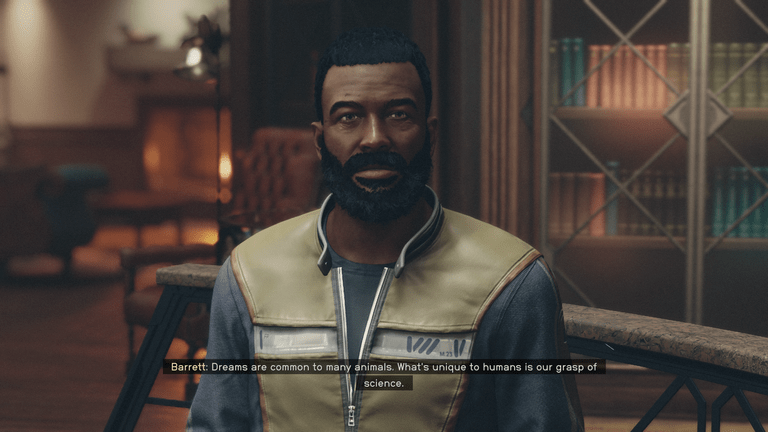
Speaking of issues: catching vampirism in Morrowind barred you from taking quests from nearly any of the factions in the game, making for a very different experience vs. vanilla gameplay. That could be considered friction, so by the time I finished Oblivion, I was the orc vampire leader of the vampire hunters (and Fighters Guild, and Thieves Guild, Champion of the Arena, etc.).
Not wanting to make Starfield have any more friction, Bethesda lets you belong to all factions at the same time. The superpowers that are still antsy from the last big war? Champion of both. Shady evil megacorp? Welcome to the corporate ladder. Pirates? Hop on the deck and flop like a fish.
The only in-game downside being that it’s difficult to maintain dual loyalties when one of the main factions is focused on fighting the space freebooters.
And it was so easy to get in with the pirates, all I needed was to accidentally steal a screwdriver.
They absolutely did not sweat the small stuff
So, spoiler zone: you join the pirates by being sent undercover to join the pirates. To get that mission, you need to progress the United Colonies’ Vanguard quest line – or be caught doing crimes in UC space.
There I was, whisked to Sol all the way from Gagarin for the heinous crime of accidentally pocketing a screwdriver that some level designer had placed on the weapon crafting bench. Since Starfield isn’t made to account for the severity of your crime, the dialogue clumsily dances around the issue, slyly alluding to the offense that brought me there in dialogue.
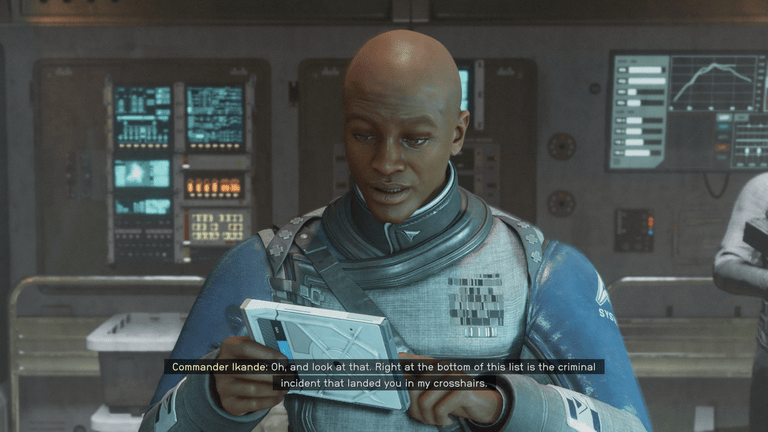
Stealing of a regular-ass screwdriver, incurring the bounty of 17 credits.
So this was merely silly. What was really downright stupid was helping collect donations for the soup kitchen in Space Texas. The NPC running the place appreciates every player’s donation of 100 credits. But as a reward for speaking with three NPCs on her behalf, I got 5000 credits. Scathing criticism of the NGO model?
Highly unlikely. The game is full of similar small nonsense. For example, visiting absolutely inhospitable planets and space stations to find food and drinks sitting in the open. Or going to bases that haven’t been used in hundreds of years, all to stumble upon the same computers and operating systems as the modern day – as well as finding modern food brands scattered around.
But hey, empty shell casings float differently in low gravity! And the day and night cycle depends on axial tilt! Who cares that the NPCs don’t have those cycles and all shopkeepers are forever shackled to their desks, bound to serve capitalism until the suns grow dim and cold?! Damn, it’s like we’re back in Morrowind!
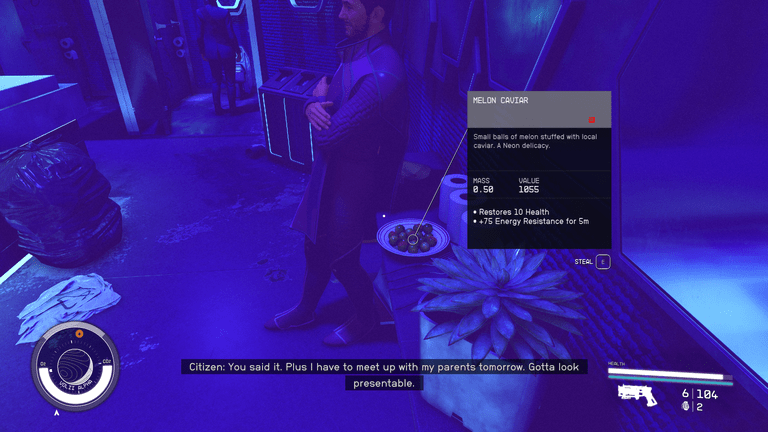
In conclusion: Starfield!
Between starting to write this rant and finishing it, I had taken to bumrushing the main plot of Starfield. I heard it tied into New Game+ mechanics, so my logic was to save the rest of the quests and activities for some time in the future, where the game is unfucked via DLCs and mods. But I don’t know if I’ll ever come back to it. The main story hit me with a twist so dumb I, without exaggeration, felt the desire to play the game physically leave my body. So, in the end, more than a million indignities foisted on us in the name of frictionless gameplay, it was the most intentionally created part of Starfield that killed the game for me.

